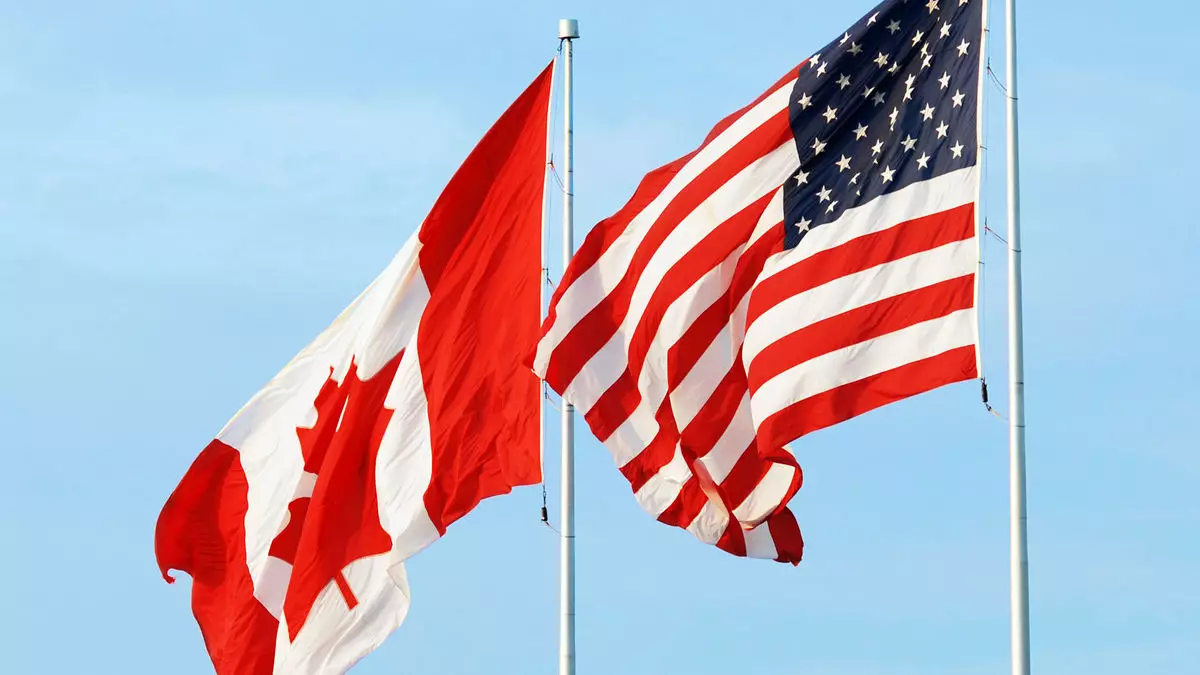The aviation industry is often heralded as a barometer for economic sentiment and international relations. Recently, however, it has mirrored the turbulence of geopolitical tensions, with bookings for flights between Canada and the U.S. plunging by over 70% for the summer season. Data from OAG, a prominent aviation analytics firm, suggests a near collapse in the previously bustling travel market—an alarming trend that showcases the fragility of the industry in the face of political drama and economic instability. This stark decline in advanced bookings serves as a clarion call, urging both the aviation sector and policymakers to confront the underlying issues that have contributed to this crisis.
Political Undercurrents Affecting Air Travel
The reasons behind the significant drop-off in travel plans are multifaceted. Chief among these is the ongoing trade tension sparked by former President Trump’s aggressive economic policies and incendiary comments regarding Canada. Statements suggesting that Canada should become the 51st state have not only agitated the Canadian populace but also instilled uncertainty within the aviation sector. Such sentiments have an undeniable impact on consumer behavior; travelers may opt to avoid visiting the U.S. out of concern for political hostility or unfavorable treatment. The consequences of this rhetoric extend far beyond mere politeness, translating into real economic ramifications that the airline industry is struggling to navigate.
The Weak Canadian Dollar: A Crushing Factor
Another significant factor contributing to this downturn is the current weakness of the Canadian dollar. As of late March, the currency’s value had dropped considerably against the U.S. dollar, with 100 Canadian dollars equating to only $70 U.S. Consequently, many Canadians are reassessing their travel plans and looking for ways to mitigate the financial impact of traveling abroad. An innovative response to this challenge has come from cruise line Oceania, which is offering Canadian customers the opportunity to book flights in their local currency at par value. These limited-time promotions highlight not only the struggles within the industry but also the creative solutions companies are employing to adapt to changing economic circumstances.
Airline Responses: Minor Adjustments Amid Major Declines
Despite this significant downturn in consumer demand, airlines have opted for relatively subtle adjustments in their scheduling and capacity. From March to late April, over 320,000 one-way seats were removed from the U.S.-Canada route, yet this still represented only a 2.6% reduction in available flights. The most drastic cuts—around 3.5%—are limited to the peak summer months of July and August. Such conservative measures may reflect an unwillingness to abandon routes completely in anticipation of a rebound. As competition stiffens and consumer interest dulls, this cautious approach is a gamble for airlines that could prove either visionary or shortsighted.
Rethinking Routes: The Transition to New Opportunities
Notably, some airlines are already eyeing opportunities beyond the troubled North American routes. According to industry expert John Grant, WestJet has taken the proactive step of shifting some of its canceled U.S. capacity toward European destinations, recently adding 114 flights that capitalize on growing interest in transatlantic travel. This strategic pivot reveals an important trend: rather than simply waiting for the Canadian-U.S. aviation market to rebound, airlines are adapting their offerings to align with evolving consumer behaviors and preferences. Such flexibility will be crucial as the industry seeks to rebound from the challenges it currently faces.
Future Outlook: Hope on the Horizon?
As summer approaches, it’s essential to reflect on how the aviation landscape might evolve. The industry is at a crossroads, caught between the weight of political instability and economic pressures. Passengers are wary, airlines are hesitant, and the sheer volume of travelers may remain subdued for the foreseeable future. Nevertheless, there exists a flicker of hope; as economic climates shift and political relationships evolve, it’s possible the aviation market could experience a resurgence. If airlines can harness the momentum generated by adaptability and innovation, there may still be a bright future ahead for the Canada-U.S. travel corridor. The current challenges, though daunting, could ultimately serve as a catalyst for a rejuvenated approach to air travel.


Leave a Reply